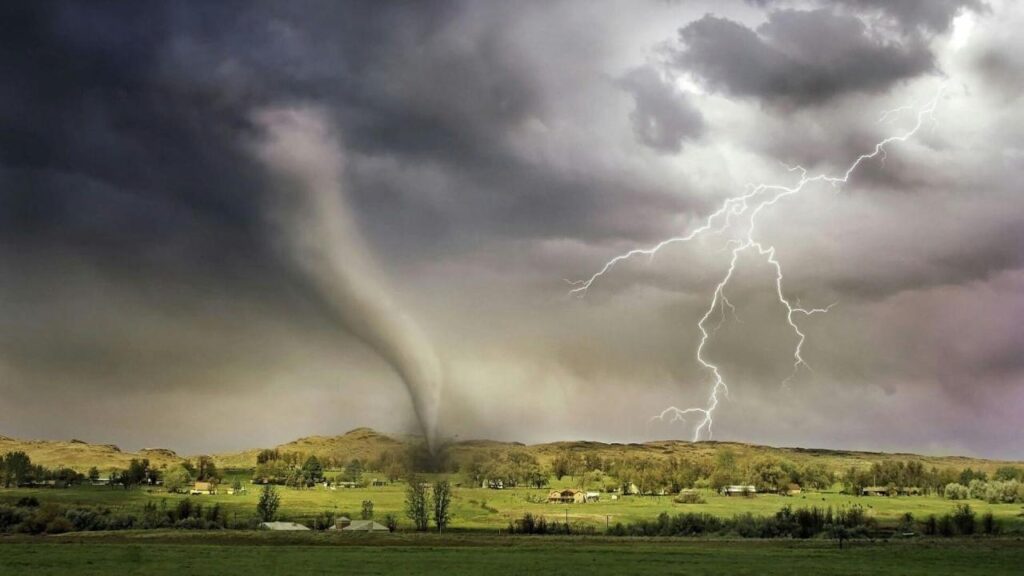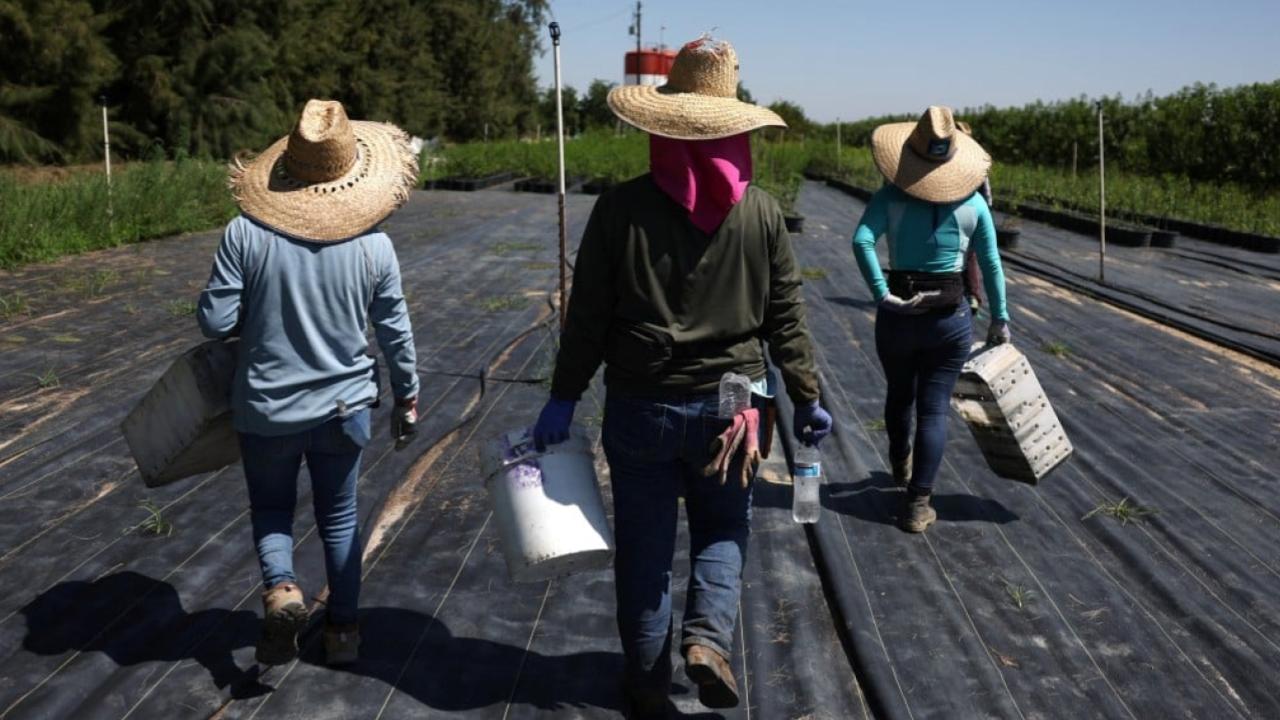A powerful tornado outbreak struck Colorado and Kansas over the weekend, causing significant destruction, tragic loss of life, and triggering ongoing severe weather alerts across the Central U.S. As rescue crews scramble to assess the damage, the National Weather Service (NWS) and Storm Prediction Center (SPC) are warning that more tornadoes could be on the way.

These storms were part of a massive system sweeping across the Plains and heading east. Here’s everything you need to know about what happened, who’s at risk next, and how to stay safe.
Shocking Tornado Outbreak Hits Colorado & Kansas
| Topic | Details |
|---|---|
| Date of Outbreak | May 18, 2025 |
| Affected States | Colorado, Kansas, Oklahoma, Missouri, Kentucky, Virginia |
| Confirmed Tornadoes | 40+ (including EF3 and EF4) |
| Fatalities | At least 28 reported |
| Injuries | 38–45 individuals |
| Power Outages | Over 600,000 affected |
| Next Areas at Risk | Central and Southern Plains, including parts of Texas and Oklahoma |
The May 18, 2025, tornado outbreak across Colorado and Kansas was a wake-up call — one that reminds us just how unpredictable and dangerous spring weather in the Plains can be. With the next round of storms already brewing, it’s time to review your family’s safety plan and double-check your emergency supplies.
Tornado Outbreak in Colorado & Kansas
On Sunday, May 18, 2025, multiple tornadoes ripped through northeastern Colorado and western Kansas, flattening homes, downing power lines, and sending residents scrambling for shelter. The National Weather Service issued a tornado watch for several Colorado counties including Weld, Logan, Morgan, Phillips, Sedgwick, and Washington — with some alerts active until 8 p.m.
These were not weak twisters either. Early reports from storm chasers and radar suggest at least two EF3 and one EF4 tornado may have touched down. Communities like Arnett, Oklahoma were also hit hard as the storm system barreled south.
This wasn’t an isolated event either. The outbreak extended into Kentucky, Missouri, and Virginia, bringing flooding rains, high winds, and multiple fatalities. Kentucky was hit especially hard, with at least 19 lives lost, many of them in Laurel County.
“This was one of the most violent nights I’ve ever seen,” said a local meteorologist from Topeka. “These tornadoes came in fast and hit hard — families had minutes to act.”
For up-to-date information and live watches/warnings, visit NOAA’s Tornado Safety Page.
Next Target: Central and Southern Plains
Unfortunately, the system isn’t done yet.
The Storm Prediction Center (SPC) has issued an Enhanced Risk (Level 3 of 5) for Monday, May 19, as the tornado threat shifts further into central and southern Plains states. Areas currently under the gun include central Kansas, Oklahoma, and even parts of northern Texas.
These storms are expected to produce:
- Long-track tornadoes
- Wind gusts up to 75 mph
- Hail the size of tennis balls
“We could easily see more supercell activity today,” warned the SPC in its latest advisory.
You can track severe storm zones on SevereWeatherOutlook.com which offers daily severe weather maps and forecasts.
Areas at Highest Risk
As of Monday morning, the following areas are under heightened alert for potential tornado activity:
Central and Southern Kansas
Cities like Wichita, Topeka, and Salina are bracing for potential tornado touchdowns and hail.
Central and Northern Oklahoma
Oklahoma City, Norman, and surrounding towns may be affected by high winds and supercells.
Western Missouri
Kansas City and nearby communities are also on the edge of the high-risk zone.
Northern Texas Panhandle
Storm systems may push further south into Amarillo and surrounding rural areas by the evening hours.
Tornado Safety Tips
When tornadoes strike, there’s little time to think. You’ve got to act. That’s why it’s critical to prepare in advance.
Before a Tornado
- Monitor Alerts: Download a weather app like NOAA Weather Radar Live or enable Wireless Emergency Alerts (WEA) on your phone.
- Identify a Safe Space: Know where to go — a basement, storm cellar, or an interior room with no windows.
- Pack an Emergency Kit: Include bottled water, snacks, a flashlight, batteries, power bank, first aid items, and essential medications.
During a Tornado
- Take Shelter Immediately: Don’t wait. Go to your pre-designated safe place.
- Avoid Windows: Flying glass is deadly. Stay low and covered.
- Use Protection: Cover your head and neck with a pillow or heavy blanket.
After a Tornado
- Stay Put Until It’s Safe: Listen for the “all clear” on local radio or news.
- Watch for Hazards: Downed power lines, leaking gas, or exposed nails are common risks.
- Check on Neighbors: Especially the elderly or those with disabilities.
Eyewitness Reports
One Colorado resident told FOX Weather, “It sounded like a freight train barreling through my backyard. When we came out, the whole barn was gone.”
Social media lit up with videos showing debris-filled funnels and wrecked neighborhoods. Drone footage released by local fire departments shows entire blocks leveled — cars flipped over, trees stripped bare, and roofs completely torn off.
Local emergency services are asking the public to avoid storm-hit zones unless helping with recovery. Crews are still working to clear roads and restore power.
Final Showdown! How to Catch the ‘American Idol’ Season 23 Finale Before It’s Gone
Breaking: Former President Joe Biden Battles Aggressive Prostate Cancer
Frequently Asked Questions (FAQs)
Q1: What’s the difference between a Tornado Watch and a Warning?
A Tornado Watch means conditions are ripe for tornadoes. A Tornado Warning means one has been spotted or detected by radar. If there’s a warning — act immediately.
Q2: What apps should I use to track storms in real-time?
Top-rated options include MyRadar Weather Radar, NOAA Weather Radar Live, and The Weather Channel App. These apps send push alerts and show storm movement.
Q3: Should I shelter in my car if I’m on the road?
No. Cars are unsafe in tornadoes. If there’s no shelter nearby, lie flat in a ditch and cover your head. Never try to outrun a tornado in urban traffic.
Q4: What organizations help with post-tornado relief?
You can donate or volunteer with the American Red Cross, Team Rubicon, and National Voluntary Organizations Active in Disaster (NVOAD).






